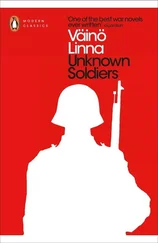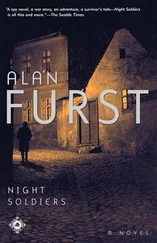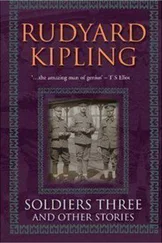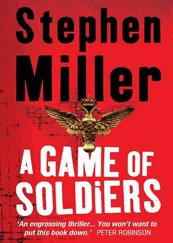Stephen Ambrose - Citizen Soldiers [Condensed]
Здесь есть возможность читать онлайн «Stephen Ambrose - Citizen Soldiers [Condensed]» весь текст электронной книги совершенно бесплатно (целиком полную версию без сокращений). В некоторых случаях можно слушать аудио, скачать через торрент в формате fb2 и присутствует краткое содержание. Жанр: История, на английском языке. Описание произведения, (предисловие) а так же отзывы посетителей доступны на портале библиотеки ЛибКат.
- Название:Citizen Soldiers [Condensed]
- Автор:
- Жанр:
- Год:неизвестен
- ISBN:нет данных
- Рейтинг книги:5 / 5. Голосов: 1
-
Избранное:Добавить в избранное
- Отзывы:
-
Ваша оценка:
- 100
- 1
- 2
- 3
- 4
- 5
Citizen Soldiers [Condensed]: краткое содержание, описание и аннотация
Предлагаем к чтению аннотацию, описание, краткое содержание или предисловие (зависит от того, что написал сам автор книги «Citizen Soldiers [Condensed]»). Если вы не нашли необходимую информацию о книге — напишите в комментариях, мы постараемся отыскать её.
Citizen Soldiers [Condensed] — читать онлайн бесплатно полную книгу (весь текст) целиком
Ниже представлен текст книги, разбитый по страницам. Система сохранения места последней прочитанной страницы, позволяет с удобством читать онлайн бесплатно книгу «Citizen Soldiers [Condensed]», без необходимости каждый раз заново искать на чём Вы остановились. Поставьте закладку, и сможете в любой момент перейти на страницу, на которой закончили чтение.
Интервал:
Закладка:
At Gerhardt's insistence Howie's body was put on a jeep and driven into the town. Men from the 3rd Battalion draped the body with the Stars and Stripes and hoisted it on top of a pile of stones that had once been a wall in the Saint Croix Church, a block from the cemetery. GIs and some of the few civilians remaining in the town adorned the site with flowers. "It was simple and direct, no fanfare or otherwise," Lieutenant Edward Jones recollected.
The story caught on with the press. Life magazine featured "The Major of St. Lo." Howie was famous, too late to do him any good. But he and the other men of the 29th had captured the high ground in that part of Normandy, putting First Army in a position to launch an offensive designed to break through the German line and out of the hedgerow country.
For that offensive Bradley was making plans to use the Allies' greatest single asset-air power, every bomber and fighter bomber that could fly- in a crushing bombardment that would blast a hole in the German line.
Chapter Three
Breakout and Encirclement: July 25-August 25, 1944
ON JULY 24, seven weeks after D-Day, US First Army was holding an east-west line from Caumont to St. Lo to Lessay on the Channel. Pre-D-Day projections had put the Americans on this line on D-Day plus five.
Disappointing as that was, Bradley could see opportunities for his army. The enemy was sadly deficient in supplies and badly worn down. One of Bradley's chief problems was that he had not enough room to bring the divisions waiting in England into the battle-not to mention Patton. For the Germans the problem was the opposite-no significant reinforcements were available. A favourable factor for Bradley: six of the eight German panzer divisions in Normandy faced the British and Canadians around Caen.
Bradley was also encouraged by aerial photographs showing that behind the German lines the roads were empty. Behind American lines the roads were nose-to-tail armour, transport convoys, and troops. Huge supply dumps dotted the fields, with no need for camouflage. These were among the fruits of air superiority.
The Ninth Tactical Air Force had a dozen airstrips in Normandy by this time. Pilots could be over their targets in a matter of minutes. They were daredevil youngsters, some of them only nineteen years of age. (It was generally felt that by the time he reached his mid-twenties, a man was too sensible to take the chances required of a P-47 pilot.) They made up to five sorties per day. They dominated the sky and brought destruction to the Germans below.
Another plus for Bradley: his men were tactically much better equipped than they had been when the campaign began. By July 24 three of five First Army tanks had been fitted with a rhino. Ground-air communications were improving daily. Bradley had ruthlessly relieved incompetent division commanders. The frontline soldiers were a mix of veterans and replacements, with relatively good morale, although, like the Germans, badly worn down.
First Army had reached the limits of the worst of the hedgerows. Beyond lay rolling countryside. Roads were more numerous; many were tarred; a few were even four-lane. The front line ran close to the St. Lo-Periers road, which was an east-west paved highway, the N-800. Here the Panzer Lehr Division held the line for the Germans. Facing them were the American 9th, 4th, and 30th divisions.
Bradley decided he could use the St. Lo-Periers road as a marker for the strategic air forces and lay a carpet of bombs on Panzer Lehr by having the bombers fly parallel to the road-a landmark they couldn't miss. The area to be obliterated was six kilometres along the road and two kilometres south of it. Massed artillery would come after the bombardment, followed by a tank-infantry assault three divisions strong. If it worked, the Americans would break out of the hedgerow country and uncover the entire German left wing in Normandy, with Patton's Third Army ready to come in and exploit a breakthrough. Bradley gave the operation the code name Cobra.
On July 24 the weather appeared acceptable, and an order to go went out to the airfields, only to be rescinded after a third of the bombers had taken off. By the time the recall signal had gone out, one flight of B-17s had crossed the coast and released its load of 500-pound bombs through cloud cover. Most of the bombs fell short, causing casualties in the American 30th Division and leaving the infantrymen madder than hell.
Worse, the bombers had come in perpendicular to the line, not parallel. The airmen argued that they couldn't funnel all the bombers through the narrow corridor created by using a single marker. It would take hours for them to pass over the target-all the time exposed to antiaircraft fire from the 88s. By coming in perpendicular, spread out, the bombers would only be taking flak during the seconds it took to cross the line and jdrop the bombs. Bradley still wanted a parallel approach, but the airmen convinced him that it was too late to change the plan.
July 25 was clear. At 0938 some 550 fighter-bombers were guided in by radio messages from air controllers riding in tanks at the head of armoured columns. P-47s fired rockets and machine guns on German positions just south of the road and dropped 500-pound bombs that could be placed within 300 metres of the American lines.
Reporter Ernie Pyle wrote, "The dive bombers hit it just right. We stood in the barnyard of a French farm and watched them barrel nearly straight down out of the sky. They were bombing less than a half-a-mile ahead of where we stood. They came in groups, diving from every direction, perfectly timed, one after another."
After twenty minutes the P-47s gave way to 1,800 B-17s. Their appearance left men groping for words to describe it. Pyle did it this way: "A new sound gradually droned into our ears-a gigantic faraway surge of doomlike sound. It was the heavies. They came on in flights of twelve, three flights to a group and in groups stretched out across the sky. Their march across the sky was slow and studied. I've never known anything that had about it the aura of such a ghastly relentlessness."
They were 12,000 feet high. Captain Belton Cooper was on the ground. "Once they started, it was like some giant prehistoric dragon snake forming a long great continuum across the sky with its tail extended over the horizon." For a full hour their strike saturated the area just south of the road to a depth of 2,500 metres. The results for the Germans were near-catastrophic.
The bombed area looked like the surface of the moon. Entire hedgerows were blasted away. German general Fritz Bayerlein reported that he lost "at least seventy per cent of my troops, out of action-dead, wounded, crazed, or numbed."
During the second half hour of the bombardment the bombline moved north. Dust and debris raised by the first waves were drifting on a south wind. The CO of Company B, 8th Infantry, 4th Division, described what happened: "The dive bombers came in beautifully, dropped their bombs right in front of us just where they belonged. Then the first group of heavies dropped theirs. The next wave came in closer, the next one closer, still closer. Then they came right on top of us. The shock was awful."
There were 111 GIs killed and 490 wounded by the shorts. Among the dead was General Lesley McNair, chief of the army ground forces, who was in the front line to witness the attack.
This bombardment was supplemented by artillery fire-1,000 guns in all. The gunners' initial task was to suppress German antiaircraft fire. When the first wave of bombers appeared, 88s knocked three of them out of the sky. But little Piper Cubs were flying near enough to the German lines to spot the flashes and call in German positions to American artillery.
When the shells started coming down on them, the German artillerymen dove into their bunkers and the antiaircraft fire ceased. Then, in a general hour-long barrage, the GIs fired 50,000 artillery shells. Overhead, as the B-17s departed, 350 P-47s swooped in for another twenty-minute strike against the narrow strip just south of the road, dropping napalm-filled drums. Their departure was the signal for the infantry and tanks to begin the ground attack. As they did so, 396 Marauders hit the rear of the German front line.
Читать дальшеИнтервал:
Закладка:
Похожие книги на «Citizen Soldiers [Condensed]»
Представляем Вашему вниманию похожие книги на «Citizen Soldiers [Condensed]» списком для выбора. Мы отобрали схожую по названию и смыслу литературу в надежде предоставить читателям больше вариантов отыскать новые, интересные, ещё непрочитанные произведения.
Обсуждение, отзывы о книге «Citizen Soldiers [Condensed]» и просто собственные мнения читателей. Оставьте ваши комментарии, напишите, что Вы думаете о произведении, его смысле или главных героях. Укажите что конкретно понравилось, а что нет, и почему Вы так считаете.
![Stephen Ambrose Citizen Soldiers [Condensed] обложка книги](/books/346737/stephen-ambrose-citizen-soldiers-condensed-cover.webp)








